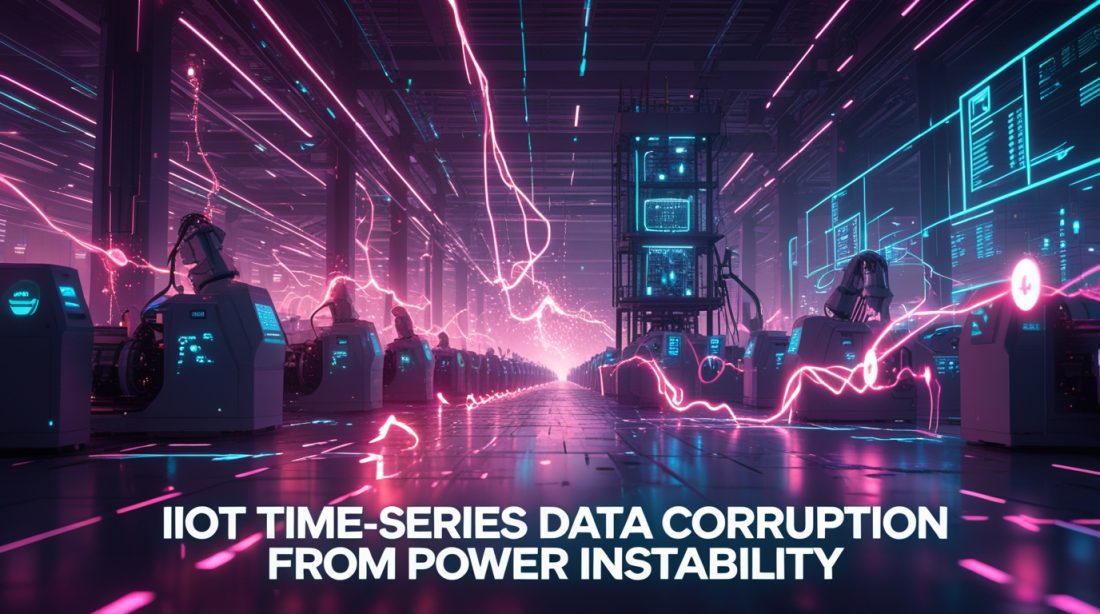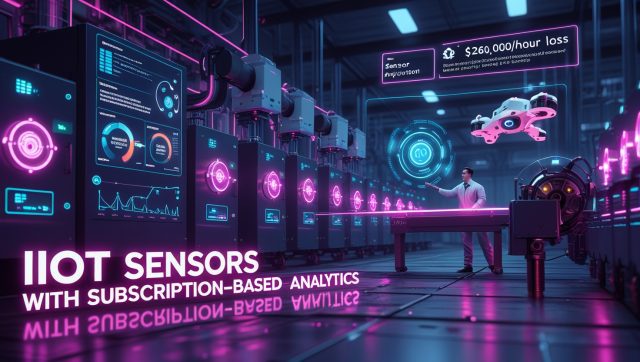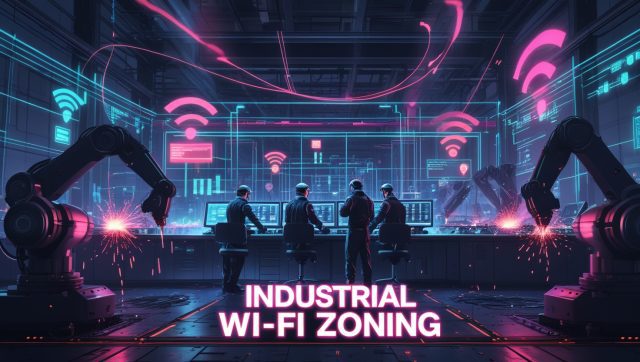A local power grid instability is no longer just a blackout to be weathered; it’s a direct and insidious threat to the data integrity in Industry 4.0 systems. In 2025, as industries rely more on the Industrial Internet of Things (IIoT) and AI, IIoT time-series data corruption from power instability is becoming a critical challenge. Fluctuations in the power grid are actively corrupting the time-series data in manufacturing that forms the backbone of smart factories. This corruption silently undermines predictive maintenance data quality, quality control, and the very intelligence that drives industrial AI analysis.
If you’re exploring how connected systems shape reliability, you might also like How Many Connected Devices Will Exist by 2030.
Why IIoT Time-Series Data Corruption from Power Instability Matters
To understand the threat, you must first see your factory’s power line as its central data artery. IIoT systems comprise thousands of sensors continuously collecting time-series data for industrial operations—measurements like vibration, temperature, and pressure, each time-stamped to create a precise history of machine health.
This data is not just numbers; it’s a continuous story. A bearing failure, for instance, doesn’t happen instantly. It’s a gradual plot told through a slowly increasing vibration amplitude over weeks. Power grid instability effects on IIoT—characterized by voltage sags, electrical noise, and power fluctuations—act as a vandal scribbling over this story.
For context on how sensors behave in critical environments, see This Tiny Sensor Could Save Your Life: Inside IoT Emergency Response in Healthcare 2025.
When a local grid is stressed—an event becoming more common with surging electricity demand from AI data centers—the clean sine wave of AC power can distort. Your IIoT sensors and the industrial edge computing devices processing their data are designed to operate within a specific voltage range. Step outside that range, and voltage sags corrupt sensor data, creating false readings, dropped data points, and data timestamp desynchronization.
A real-world glimpse: In Summer 2024, a “near miss” event in Virginia Data Center Alley saw 60 data centers suddenly disconnect from the grid, triggering a huge surge of excess electricity that regulators had to mitigate to avoid cascading outages. This violent grid reaction highlights the data center growth grid reliability challenge and creates the exact conditions that corrupt industrial IoT data.
If you’re looking into how power issues affect smart manufacturing, read AI-Driven Industrial Energy Optimization in 2025.
How Grid Instability Directly Corrupts Your Time-Series Data
The corruption is not always a dramatic crash; it’s often a silent decay of time-series data integrity. Below are the primary mechanisms driving industrial IoT data corruption causes.
→ Creation of Data Gaps and Loss of Fidelity
A brief voltage dip can cause a sensor or edge gateway to reboot. This momentary lapse results in data gaps in time-series analysis—a period where the machine’s story goes untold. For predictive maintenance, these gaps are catastrophic. They break the sequence, making it impossible to detect the very trends AI systems were designed to find. As experts note, the issue is no longer a lack of data, but the integrity of IIoT data we collect.
→ Introduction of Signal Noise and Anomalies
Electrical noise in sensor signals can couple into communication lines, creating false anomalies. A vibration sensor on a healthy motor might show a massive spike due to power fluctuations, leading to false failure alerts and wasted downtime. This problem underscores the cost of bad IIoT data for industries dependent on AI-driven analytics.
Related read: IIoT Pump Manual Override: Why 1 in 3 Smart Pumps Still Fail During Peak Load
→ Desynchronization of Timestamps and Context Loss
The value of time-series database data validation depends on precise timing. Power instability can disrupt NTP synchronization, leading to timestamp desynchronization across IIoT devices. When comparing pressure and temperature data, misalignment renders the data useless for real-time data processing at the edge or root-cause analysis.
The Ripple Effect: Why Corrupted Data Breaks Industrial AI
The downstream impact on industrial AI analysis is severe. AI and machine learning models obey the rule: garbage in, garbage out. In other words, AI garbage in garbage out industrial.
- Eroded Trust in Predictive Maintenance: If your data is noisy, predictive alerts fail. This undermines trust in industrial AI systems and predictive maintenance data quality.
- Faulty Optimization: AI relying on inaccurate readings wastes resources. It adjusts systems based on corrupted sensor data.
- Compromised Product Quality: Voltage sags or flickers during automated inspection can corrupt camera inputs, showing how power quality for factory data acquisition affects output accuracy.
Defending Your Data: Strategies for 2025 and Beyond
Hardened Power Infrastructure
Invest in UPS for industrial IoT devices and power conditioning for IIoT networks. These stabilize power supply, smooth voltage sags, and provide backup power for IIoT edge computing power backup during outages—critical for mitigating power grid data corruption.
Edge Computing and Data Validation
Adopt edge computing data validation practices. Processing and verifying data locally helps ensure IIoT data architecture for reliability. It also minimizes the risk of industrial AI analysis inaccurate data reaching your core systems.
Contextualized Data and Robust Architecture
Future industrial data management trends 2025 focus on contextualizing and validating data at the source. Tagging readings with asset IDs, timestamps, and location metadata ensures resilience even when disruptions occur. Combining edge computing with smart grid and IIoT data reliability principles builds fault-tolerant systems.
The Bottom Line: A Call for Data Integrity
The convergence of grid instability in manufacturing 2025 and time-series data integrity in IIoT is a major industrial challenge. Power grid failure doesn’t just halt production—it compromises your Industrial AI’s accuracy. Protecting IIoT data from power fluctuations is not optional; it’s a core requirement for sustaining the data integrity in Industry 4.0 era.
As AI data center electricity demand continues rising, factories must harden their electrical infrastructure, improve data validation pipelines, and adopt real-time edge processing strategies to safeguard their digital future.
If you’re interested in the new wave of smart sensors, check IIoT Sensors with Subscription-Based Analytics Surge or Boost Cobot ROI: Warehouse Efficiency Savings.
❔ FAQ
Can the cloud fix bad data?
Not entirely. Cloud systems depend on local data fidelity. Preventing power-related IIoT data corruption at the edge is more effective than trying to fix it later.
Which regions face higher risks?
Areas with heavy data center growth, like Virginia Data Center Alley, or aging grids face greater power grid reliability challenges and are more prone to industrial IoT data corruption.
What’s the simplest first step?
Start with a power quality audit. Identify voltage sags, electrical noise, and install UPS for industrial IoT devices on critical systems.
Fast Facts
IIoT time-series data corruption from power instability—such as voltage sags, electrical noise, and timestamp desynchronization—disrupts time-series accuracy and degrades predictive maintenance. Protecting against power fluctuations, adopting UPS systems, and ensuring IIoT data integrity are key to maintaining AI reliability in 2025 manufacturing.
Sources & Further Reading
- MDPI Energies: Voltage Sag Detection and Compensation Signal Extraction for Power Quality Mitigation Devices
- ScienceDirect: An Approach for Assessing Industrial IoT Data Sources to Support Predictive Maintenance
- Flex: Power Quality: The Unseen Phenomenon Behind Some of the Biggest Data Center Challenges



